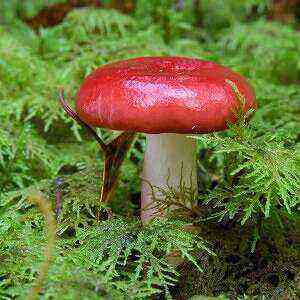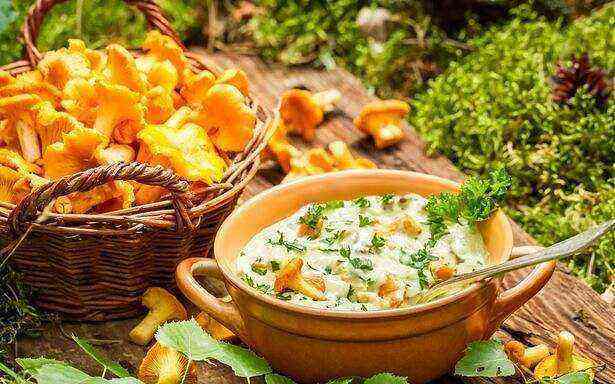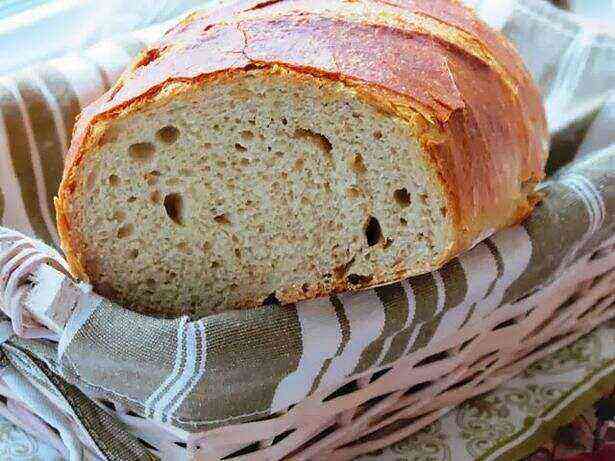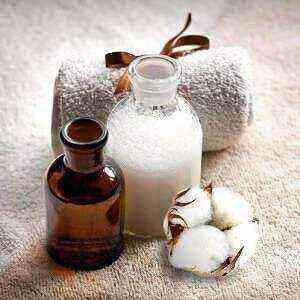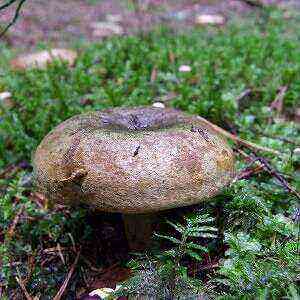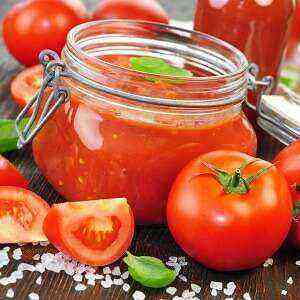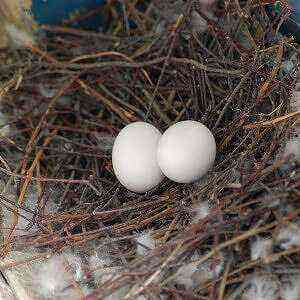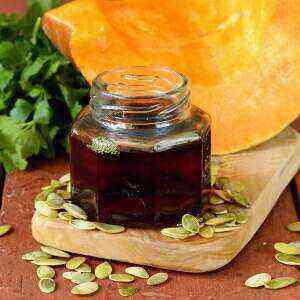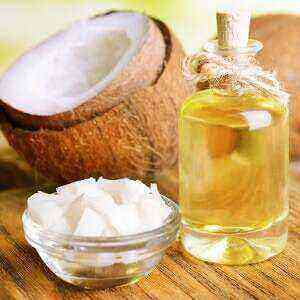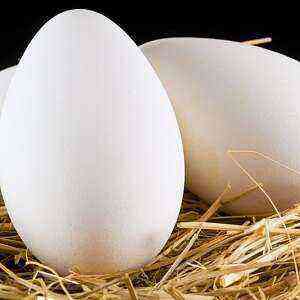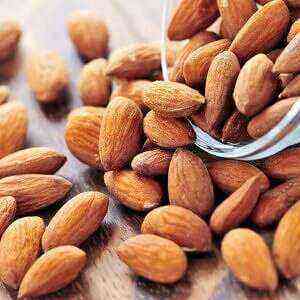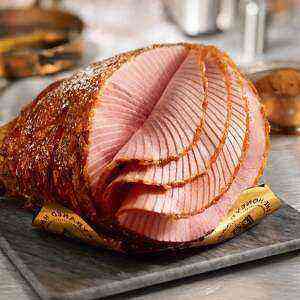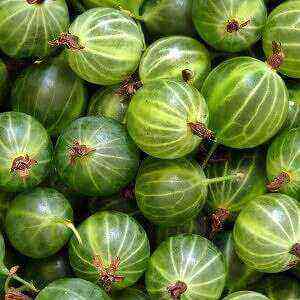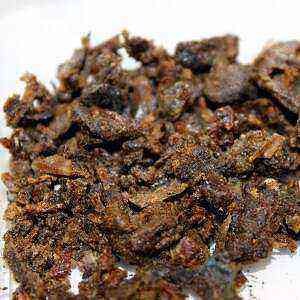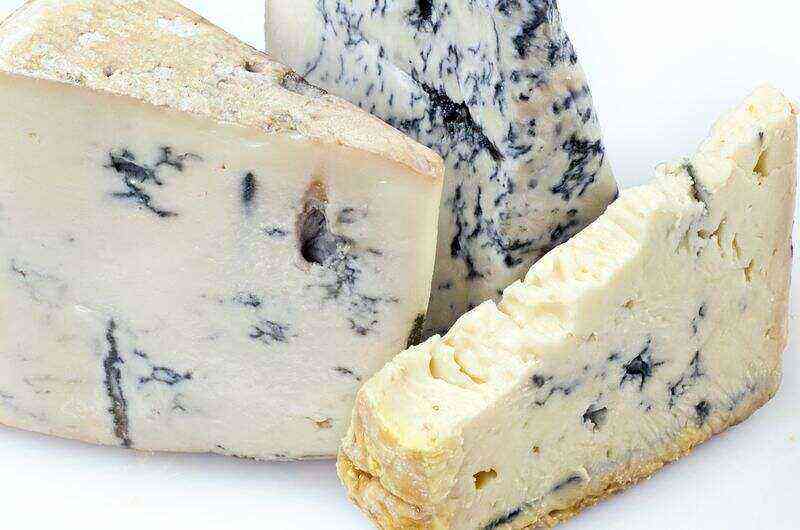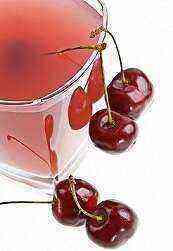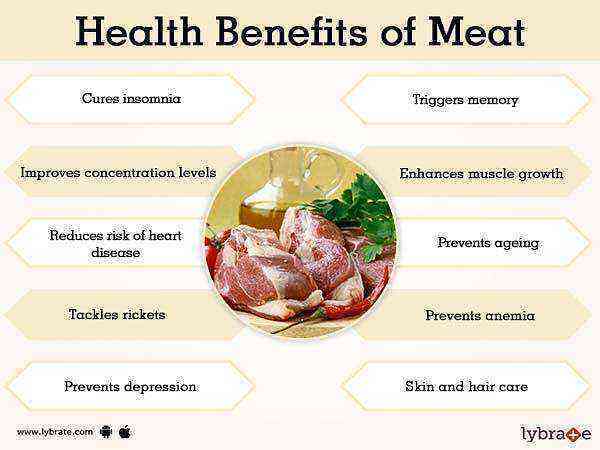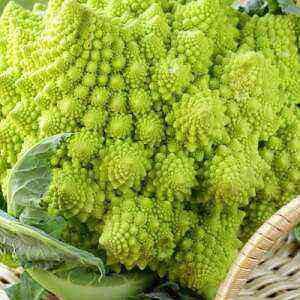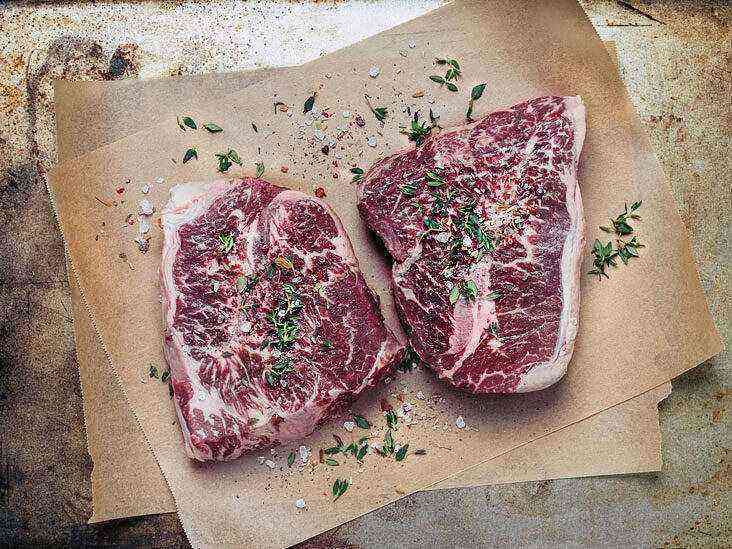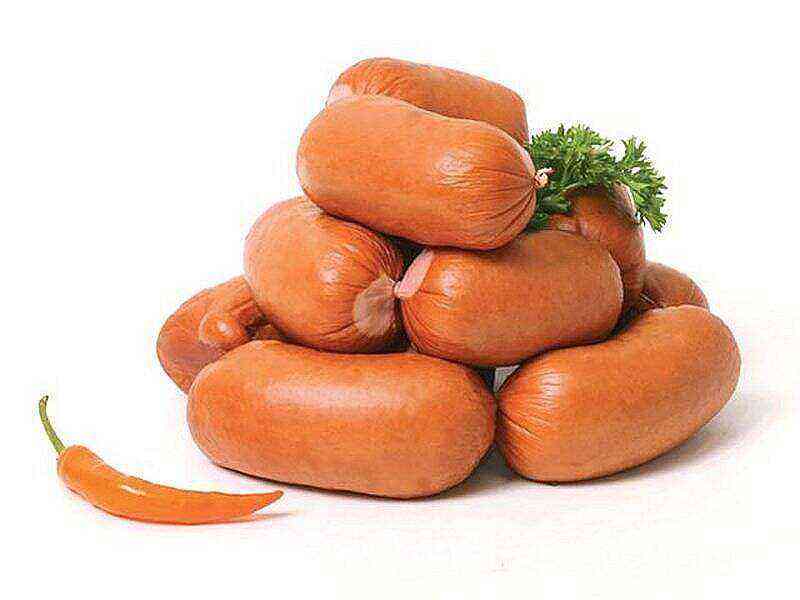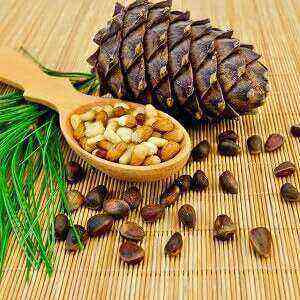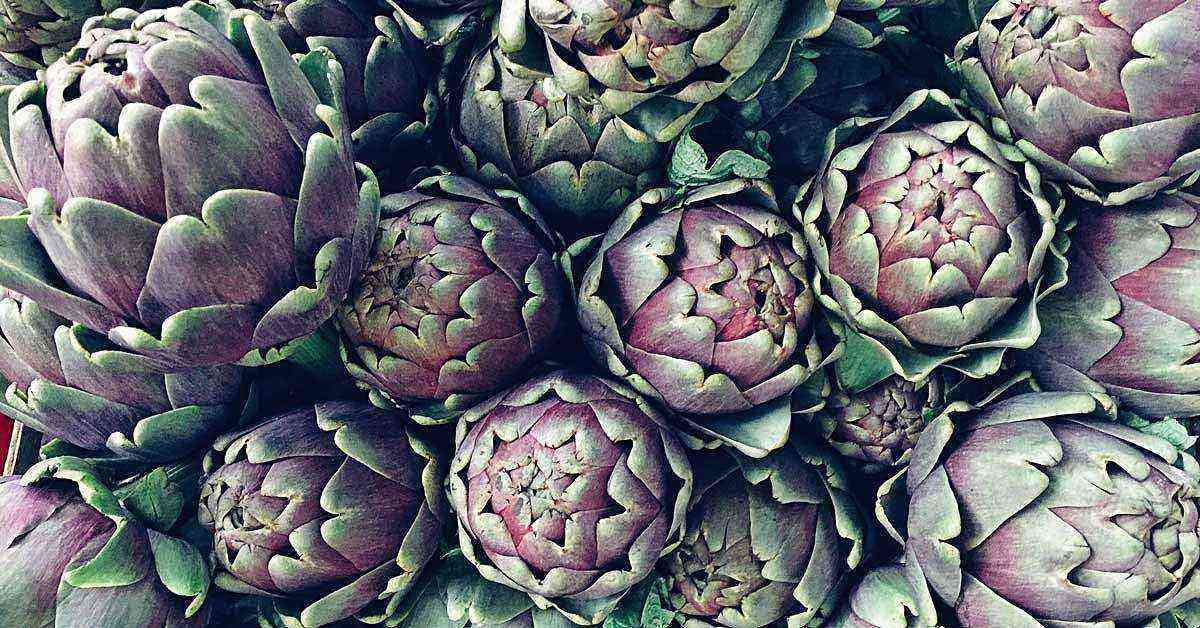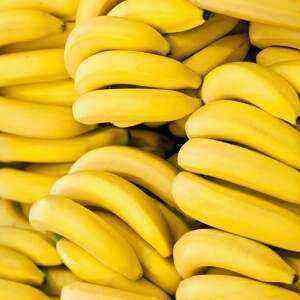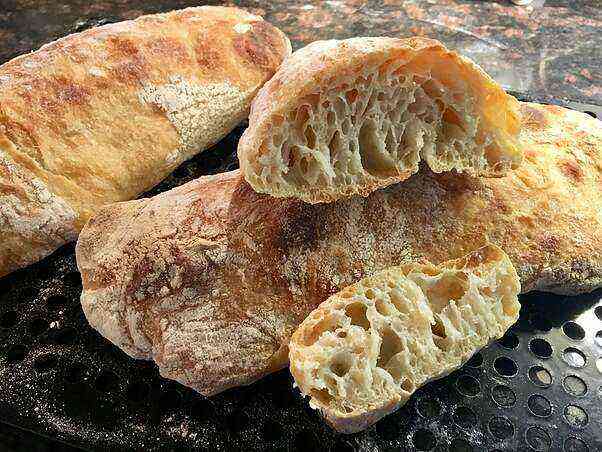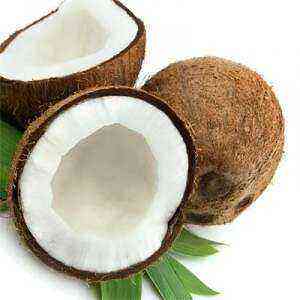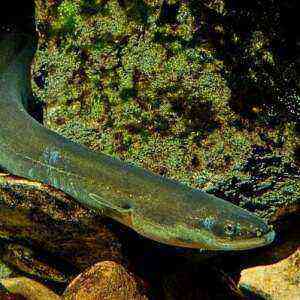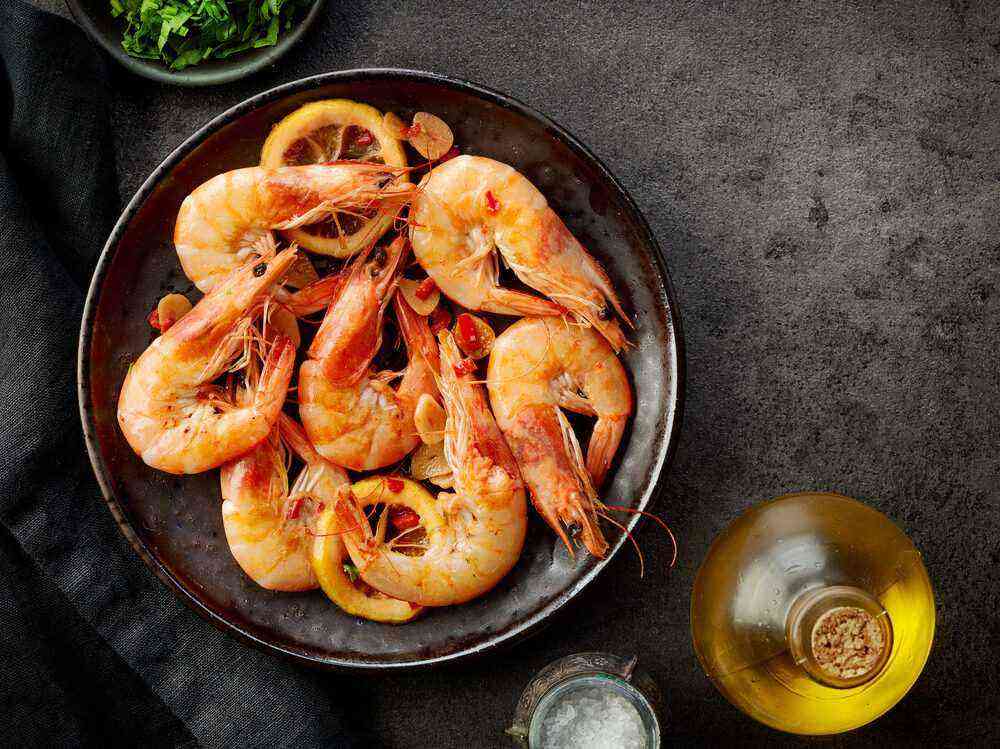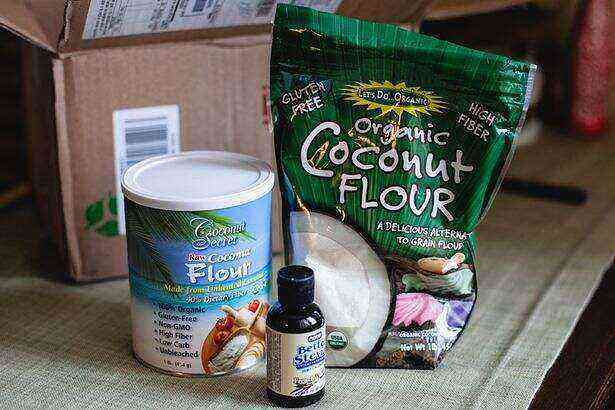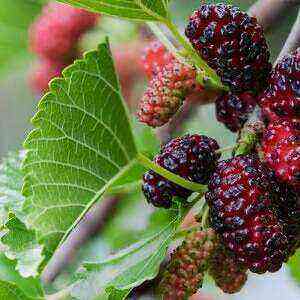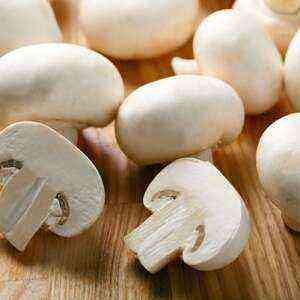
Champignon belongs to the agaric (lamellar) family, which combines mushrooms of 13 genera of different species. Nowadays, there are more than 60 species of them. The most common of them are such as field (meadow), common, steppe, two-ring, forest champignon. Two types of mushrooms – yellow-skinned and variegated – are not used in cooking due to their toxicity.
Champignons of many types are widely distributed throughout the world. They grow in the forest-steppe and steppe zones of Europe, the South American pampas, the North American prairies, open places and in the meadows of Africa and Australia, the steppes of Central Asia. They can be seen everywhere – on the bark of dead trees, humus, anthills, in the forests among the grass, along the roadsides, etc.
Champignons have a diameter of 3 to 25 cm. Their cap is often dense, fleshy, spherical, and in maturity it becomes umbrella-shaped. The surface is fibrous, smooth, scaly, grayish-white in color, and as the fungus grows, it can turn brownish and brown. The plates are white at first, and then with age they turn slightly pink and darken. The leg is dense, even, as it matures, a clearly pronounced two-layer or one-layer ring is visible.
When picking champignons, inexperienced mushroom pickers can confuse them with pale toadstools, because these mushrooms at the initial stage of development are very similar to each other. Champignons differ from the poisonous pale toadstool by the absence of a tuberous thickening at the base of the stem and by dark or pale pink plates. In order not to risk it, it is better to collect small mushrooms, growing separately.
Nutritional value and composition
The champignon is 80% water. Another 20% are vitamins, organic acids and minerals.
Table 1 “Chemical composition of champignons”
Composition
Content in 100 grams
Proteins 4,3 g Carbohydrates 0,1 g Fats 1 g Water 81 g Ash 1 g Dietary fiber 2,6 g Unsaturated fatty acids 0,1 g Saturated fatty acids 0,1 g Mono- and disaccharides 0,1 g
Vitamins
Vitamin A 2 mcg Beta-carotene 0,01 mg Thiamine (vitamin B1) 0,1 mg Riboflavin (vitamin B2) 0,45 mg Pyridoxine (vitamin B6) 0,05 mg Pantothenic acid (vitamin B5) 2,1 mg Folic acid (vitamin B9) 30 mcg Vitamin PP 5,6 mg Vitamin E 0,1 mg Vitamin C 7 mg
Minerals
Calcium 4 mg Potassium 530 mg Sodium 6 mg Phosphorus 115 mg Sodium 6 mg Chlorine 25 mg Fluorine 14 μg Iron 0,3 mg Iodine 18 μg Zinc 0,28 mg Chromium 13 μg Cobalt 15 μg Molybdenum 3 μg Rubidium 26 μg
As you know, all mushrooms are rich in proteins. And champignons are no exception: 1 kilogram of this product contains about as much protein as 1 liter of cow’s milk. The protein of the chicken contains 18 amino acids, while 8 of them are irreplaceable (they enter the human body exclusively with food, they do not have the ability to synthesize). Japanese researchers have found that mushrooms in high quantities contain such amino acids as lysine and arginine, which have a beneficial effect on the development of human mental abilities and memory. The protein of this mushroom is absorbed by 70-80%. Therefore, those who use them can, without prejudice to their health, give up sausages and meat.
Champignons correspond to fish in terms of phosphorus content. Their chemical composition is quite large, and this distinguishes these mushrooms from others. They harmoniously combine vitamins, useful macro- and microelements. The calorie content is very low – 100 grams contains no more than 27 kcal.
A bit of history

At the end of the 12th century, it was noticed that peppers can grow well in underground rooms and basements. Their cultivation in France reached its maximum development in the 14th-1903th centuries, especially around Paris. This was facilitated by the presence of old quarries, in which throughout the year there was a temperature in the range of XNUMX-XNUMX ° C, favorable for growing these mushrooms. Champignon culture from France penetrated into Germany, Great Britain and other European states. Since XNUMX, they began to be grown in America.
In 1893-1894, in France at the Pasteur Institute, a method was developed for germinating champignon spores and obtaining a sterile mycelium. In most countries, in which the culture of these mushrooms has already spread, by 1924 special laboratories were developed where their sterile mycelium was produced. In Russia, champignons began to be cultivated starting from the middle of the XNUMXth century.
To date, champignons are cultivated in more than 70 countries around the world. This industry is most developed in the UK, USA, Germany, France, Denmark, the Netherlands and other countries. About 25% of production takes place in the United States, this country is also the main exporter of such mushrooms.
The largest plantation in the world is located in an old limestone mine in Pennsylvania. The plantation’s underground galleries are 24 kilometers long.
Cultivation of champignons
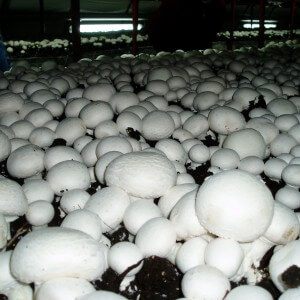
Purchase and selection
Fresh champignons are available in shops and markets. When choosing, you need to pay attention to the following criteria:
- fresh mushrooms of white color, sometimes with a pinkish or beige tint;
- matte surface of the cap;
- no dents, dark areas or spots on the surface;
- the broken integrity of the film connecting the stem and cap indicates the “old age” of the fungus;
- smell the mushroom – its freshness is indicated by a pronounced pleasant smell that resembles anise;
- fresh champignon is elastic to the touch, and spoiled is like a sponge.
Storage conditions
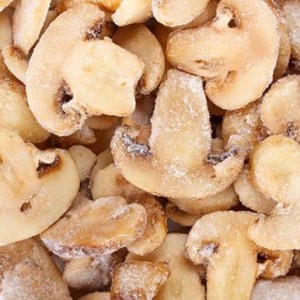
- In the refrigerator, open mushrooms can be stored for up to 2-3 days – not covered with a film, they become weathered and begin to darken. Under cling film, the shelf life is extended to 5-6 days. If stored for a longer period, they can harm the body.
- To increase the shelf life, mushrooms are frozen. In this form, they can be stored for a very long time, but defrosting in portions – you must not allow re-freezing. To freeze fresh mushrooms, they need to be washed well, dried, if necessary, large ones should be cut into pieces and the excess should be cut off. After that, freezing is carried out. Store them in tightly tied bags.
- You can freeze pre-fried mushrooms. To do this, add oil to a deep frying pan and fry until the moisture evaporates or put in the oven without oil. Then the fried mushrooms are placed in a container and frozen. You can store them in this form for no more than 6 months.
- The champignons are washed and boiled in slightly salted water, cooled, dried thoroughly, laid out on a foil or baking sheet in one layer and frozen. Shelf life – no more than six months in tied portion packages.
Use in cooking

Champignons go well with vegetables, seafood and fish, meat, cereals, eggs, cheese. Many people like stewed potatoes with champignons, but, according to nutritionists, mushrooms and potatoes are not combined well, as with nuts and milk: dissimilar proteins, high glycemic index of starch – as a result, digestive upset is possible.
Before cooking, the mushroom must be cleaned of soil and other contaminants. First, clean off the dirt with a knife and rinse the mushrooms quickly under running water. It is not recommended to leave them in water for a long time, otherwise the mushrooms will become tasteless and watery. When cleaning, the film is removed, which is located between the cap and the leg. The lower part of the leg is cut off if it is dirty.
Although champignons can be eaten fresh, in most cases they are eaten after a short heat treatment. Champignons, which are grown industrially, have found wider application, because they tolerate any kind of cooking well. Wild ones are well suited for fillings, sauces, first courses. But they are not suitable for frying – they will become very hard and dry.
Medicinal properties
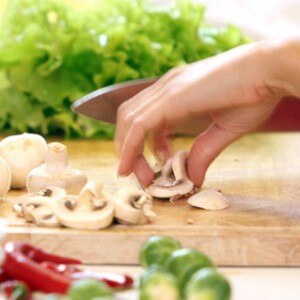
- The low calorie content of champignons allows them to be used in various diets for weight loss, while not depriving themselves of the necessary vitamins and other useful substances. Due to its low sodium content, it is successfully used in salt-free diets.
- Such mushrooms can be eaten by diabetics – they have no sugar and practically no fat.
- Champignons have the ability to cleanse the body by removing heavy metal salts.
- They contain aromatic and flavoring extractives, which in the body cause the release of digestive juices in abundant quantities, improve the absorption of food and stimulate appetite, increase metabolism.
- Due to the expectorant and bronchodilator effect, it can be used for the complex treatment of broncho-pulmonary pathology (bronchial asthma, bronchitis, etc.).
- May lower cholesterol levels and prevent plaque build-up. Studies have shown that people who often eat these mushrooms have 34% lower cholesterol levels in their blood compared to those who do not eat mushrooms. Therefore, the risk of developing a heart attack and atherosclerosis is reduced.
- Due to the high content of riboflavin and thiamine, the use of chicken helps prevent headaches and migraines.
- They help to get rid of psoriasis, eczema, ulcers, purulent skin lesions.
- Slows down skin aging – can be used to prepare masks.
- The healing properties are preserved in dried mushrooms. They must be used by those people who suffer from stomach ulcers and hepatitis.
Противопоказания

- Not recommended for patients with chronic kidney and digestive system diseases.
- The high content of folic acid in mushrooms promotes the growth of malignant cells and their reproduction, therefore, mushrooms should not be eaten by cancer patients.
- You need to be careful with such mushrooms during breastfeeding and pregnancy.
- Children under 5 years old cannot eat any dishes with mushrooms, even if it is only, for example, filling in pizza or pies, since their bodies do not have enough enzymes necessary for their digestion.
Champignon is an amazing mushroom that is rich in vitamins and minerals. It is not only an excellent nutritious product, but also has many useful properties, thanks to which it is widely used in cosmetology, dietetics and traditional medicine.

